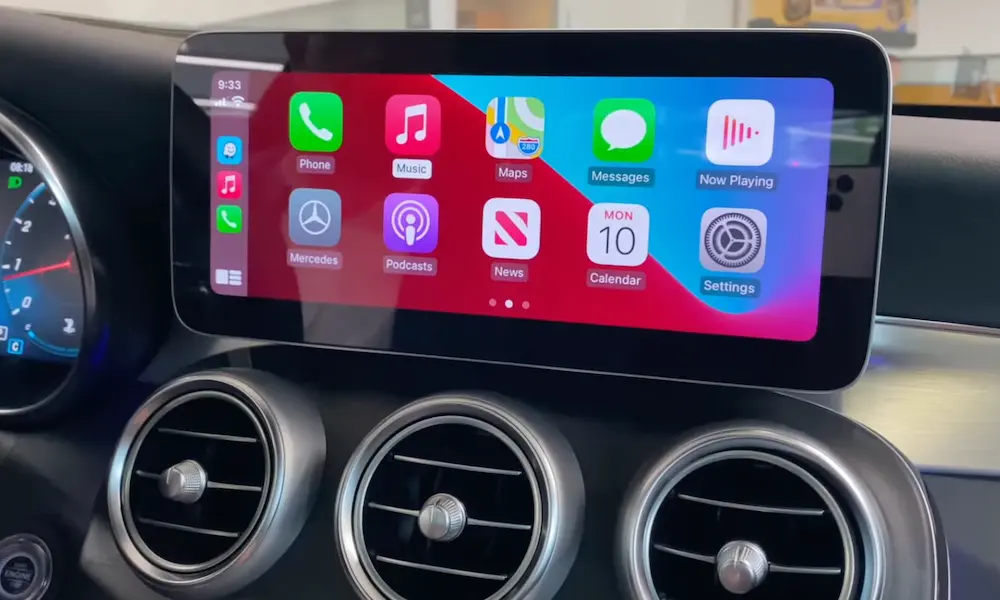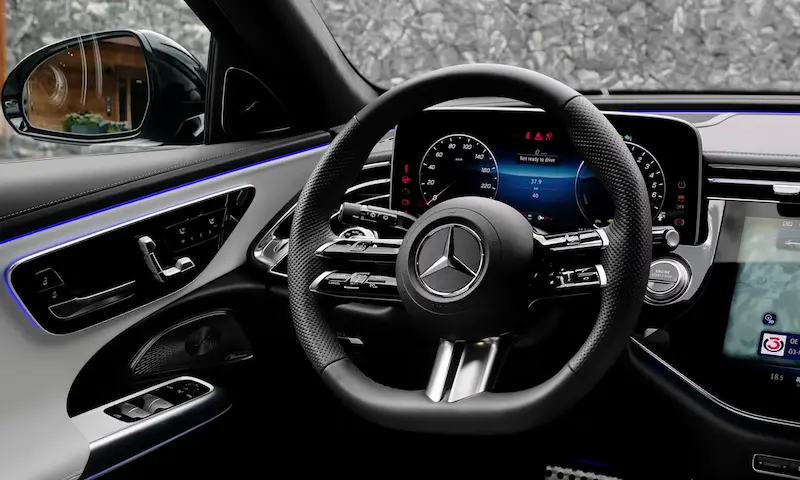Having a properly functioning wheel speed sensor is crucial for the safety and performance of your Mercedes. This component plays a significant role in the anti-lock braking system (ABS) by monitoring the speed of each wheel and sending this information to the vehicle’s computer. If you’re experiencing Mercedes wheel speed sensor problems, it’s essential to address them promptly to ensure your vehicle’s safety on the road.
One common issue with Mercedes wheel speed sensors is their tendency to become dirty or damaged, which can lead to inaccurate readings and a malfunctioning ABS system. By becoming familiar with the symptoms of a bad wheel speed sensor, such as an illuminated ABS warning light or inconsistent braking performance, you’ll be better equipped to identify and resolve these problems.
Function and Importance of Speed Sensor
The speed sensor plays a crucial role in your Mercedes’ safety and performance. As a vital component of the anti-lock braking system (ABS), it ensures that your vehicle maintains optimal traction and control. The speed sensor monitors each wheel’s speed and sends this data to the car’s computer, allowing for quick adjustments to the braking system whenever necessary.
The ABS is an essential safety feature that prevents your wheels from locking up during sudden or hard braking scenarios. By continuously adjusting the brake pressure, ABS allows you to maintain better control over your car and helps prevent skidding or sliding. The speed sensor’s accurate data is critical for the overall effectiveness of your vehicle’s ABS.
When the speed sensor is functioning correctly, you might not even notice its presence. However, if it starts to malfunction, it can cause some noticeable issues. For instance, a faulty speed sensor may trigger the ABS light on your dashboard, indicating that there is a problem with the anti-lock braking system. If this light comes on, it is important to have your vehicle inspected and the speed sensor checked by a professional.
Additionally, a malfunctioning speed sensor can cause poor engine performance and negatively impact your vehicle’s braking system. This can lead to an increased risk of accidents, as you may experience difficulties during sudden or hard braking situations.
Common Mercedes Wheel Speed Sensor Problems
One common issue you might face is a faulty wheel speed sensor, also known as the ABS sensor. This can result in several symptoms such as lit ABS warning light, check engine light, stability control light, and traction control light. If left unaddressed, it might even lead your vehicle to go into limp mode, affecting your overall driving experience.
Another problem you might encounter is a damaged speed sensor wire. If the wire is damaged, it could hinder the sensor’s ability to communicate with the ABS computer, leading to inaccurate readings and potential damage to your braking system. To avoid further issues, you should inspect the wiring and connectors of the wheel speed sensors regularly.
When troubleshooting a defective wheel speed sensor, you might notice poor braking performance or the front tires locking up. This is because a bad sensor can cause the anti-lock braking system (ABS) to malfunction. Additionally, an improper connection or bad connector can also cause issues with your wheel speed sensor. Make sure to inspect the connectors for corrosion, damage, or loose connections to avoid unnecessary complications.
It’s essential to pay attention to the various symptoms related to wheel speed sensor problems. Addressing these issues early on can prevent further damage and ensure that your Mercedes operates smoothly and safely. So, if you experience any of the mentioned symptoms, it’s advised to have your vehicle inspected by a professional technician.
Diagnosing Wheel Speed Sensor Issues
When you suspect a problem with your Mercedes wheel speed sensor, the first step in the diagnostic process is to use an on-board diagnostics (OBD) scanner. This tool helps you identify any diagnostic trouble codes (DTCs) that may appear due to the sensor’s malfunction. By connecting the OBD-II diagnostic scanner to your vehicle, you can instantly access any error codes and get a clearer understanding of the issue.
Next, you may want to use a multimeter to further analyze the wheel speed sensor’s performance. Multimeters measure electrical voltage in ohms (resistance), volts, and amps. To check the sensor’s electronic pulsing power, connect the multimeter’s probes to the relevant wire connections. If things are in proper order, you should see consistent readings on the multimeter. Inconsistent or abnormal readings could suggest a faulty sensor or a problem with the wiring.
It’s also essential to visually inspect the wheel speed sensor and its wiring. Ensure that the sensor is properly connected and free from damage or debris. Any loose or corroded wire connections can impact the sensor’s functionality and cause issues with the anti-lock braking system (ABS). If you notice any damaged wiring, it is crucial to repair or replace it to maintain optimal performance.
In addition to the electrical aspect, it’s essential to check the sensor’s physical condition. Inspect the sensor for any visible signs of wear, corrosion, or other damage that may impair its functionality. Sometimes, debris or dirt can build up around the sensor, so it’s important to clean the area to ensure accurate readings.
By following these diagnostic procedures and troubleshooting methods, you can identify wheel speed sensor issues in your Mercedes more effectively. Addressing these problems promptly helps maintain your vehicle’s performance and the safety of you and your passengers.
Replacing a Defective Wheel Speed Sensor
When you need to replace a defective wheel speed sensor on your Mercedes, first make sure to gather all the necessary tools and parts. You’ll need a replacement wheel sensor, a connector, and connectors for the stability control. It’s advisable to use an OEM sensor to ensure compatibility with your vehicle. Before starting, locate your vehicle’s VIN and transmission information to verify the correct parts.
To begin the process, you should find your ABS fuse block by removing the fuse block lid in the engine compartment. Using a floor jack, lift the front of your vehicle and use a tire iron to loosen the lugs on each of your four wheels. Remove all wheels.
With your gearshift in neutral, locate the wheel speed sensor’s wire under your front wheel well. Carefully remove the connector from the ABS sensor and unclip the ABS wire from any retaining C clips or brackets.
Now, it’s time to remove the faulty sensor. Unscrew the ABS sensor bolt and gently pull the sensor out from the wheel hub. Be cautious to not damage any other nearby components during removal.
Before installing the new sensor, clean the mounting area on the wheel hub to ensure a secure fit. Place your new sensor in position and tighten the ABS sensor bolt. Once it’s secure, reconnect the ABS wire and the connector to the ABS control unit.
Finally, reattach your wheels and tighten the lugs. Lower your vehicle, and now you have successfully replaced your defective Mercedes wheel speed sensor. This repair should restore the proper functioning of your ABS and stability control systems, making your driving experience much safer.
Consequences of Ignoring Sensor Problems
If you ignore problems with your Mercedes wheel speed sensor, you could be putting yourself and others on the road at risk. This crucial safety feature helps maintain stability control and traction control, ensuring that your vehicle remains easy to handle and safe to drive.
When the sensor begins to fail, you might experience a loss of control in situations where stability and traction are needed, such as during an emergency stop. This can lead to skidding and reduced steerability, potentially causing accidents and compromising your vehicle’s directional stability.
Neglecting to address faulty wheel speed sensors can also impact the efficiency of your car’s braking system. The sensor plays a key role in determining the pressure applied to each wheel during braking, so if it’s not working properly, the brakes might not function as effectively as they should. This can leave you vulnerable in high-pressure driving situations where a quick and precise braking response is necessary.
Ignoring sensor problems can also cause the proper functioning of other safety systems in your Mercedes to go haywire, such as the anti-lock braking system (ABS) and the electronic stability program (ESP). These systems rely on accurate wheel speed data to operate effectively, and when they receive incorrect information from a faulty sensor, they may not provide the level of protection and assistance that you expect.
In short, neglecting to address wheel speed sensor issues can compromise your safety and the overall driving experience, reducing the effectiveness of crucial safety features like stability and traction control. By resolving these issues promptly, you’ll ensure that your Mercedes remains safe and enjoyable to drive.
Final Thoughts
Mercedes wheel speed sensor problems can be quite a hassle, but with the right information, you can tackle this issue effectively. It’s vital to identify the symptoms early, which may include faulty anti-lock braking system or inconsistent wheel speed data. You should also be aware that using aftermarket parts might not be compatible with your vehicle, as mentioned in this Mercedes-Benz Owners’ Forum.
When facing these problems, consider consulting a professional or seeking advice from fellow Mercedes-Benz owners on forums such as BenzWorld.org. Remember that the best solution is to replace the faulty wheel speed sensor with a genuine OEM part to ensure optimal performance and compatibility.
By keeping these insights in mind, you’ll be prepared to address Mercedes wheel speed sensor issues and maintain the safety and performance of your vehicle.












